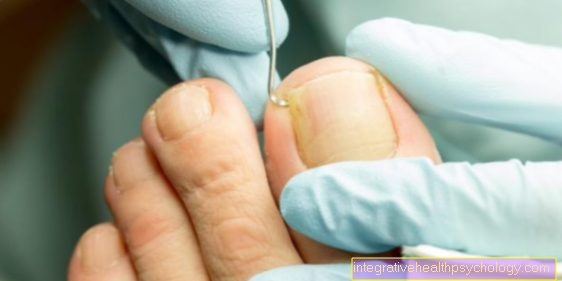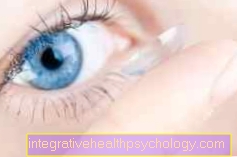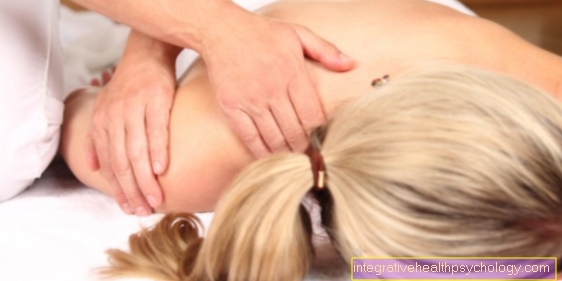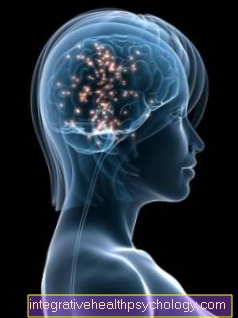Trisomy 13 in the unborn child
Definition - what is trisomy 13 in the unborn child?
Trisomy 13, also known as Patau's syndrome, is a change in the chromosomes in which chromosome 13 is present three times instead of two times. The disease is associated with malformations of several internal organs and in many cases can be diagnosed before birth. Children born with trisomy 13 rarely live to be older than six months. Trisomy 13 occurs in about 1 in 10,000 children.
Read more on the subject at: Chromosome aberration - what does it mean?
causes
In the vast majority of cases, the cause of trisomy 13 is a fault in the egg cells or sperm cells. These cells normally have half a chromosome set with 23 chromosomes. During the subsequent fertilization, the union of the egg cell and the sperm then creates a cell with a whole set of chromosomes, i.e. 46 chromosomes.
Read more on the subject at: Chromosomes - structure, function & diseases
In trisomy 13 there is an error in the separation of the chromosomes in the egg or sperm cells, so that chromosome 13 is present twice. Accordingly, after fertilization, chromosome 13 is present in triplicate. One speaks of a trisomy.
An exact cause for this error in the distribution of the chromosomes has not yet been established. One possible risk factor is the older mother's age at fertilization.
Diagnosis before birth
In most cases, trisomy 13 can be diagnosed before birth as part of prenatal care. During the ultrasound examination, the so-called neck fold measurement is carried out as standard. The neck crease is a build-up of fluid under the skin in the neck area in the unborn child. From a thickness of about 3mm this is called thickened. A thickened crease in the neck can be indicative of a number of diseases such as Trisomy 21, 18 and 13.
If this examination is noticeable, a series of further examinations follows. This includes an amniotic fluid test and sampling from the placenta. Child cells for chromosome analysis can be obtained from these samples. The chromosome analysis shows whether a trisomy is present or not.
Read more on the subject at: Genetic examination
In addition to the invasive examination methods mentioned above, which always involve the risk of miscarriage, there are also non-invasive blood tests such as the Harmony test to detect a trisomy.
Read more on the subject at: Prenatal test
Concomitant symptoms
Since the neck fold measurement is usually carried out in the 10th to 14th week of pregnancy, there are usually no symptoms or signs that the pregnant woman might notice before the diagnosis is made.
If trisomy 13 remains undetected, symptoms only appear after birth due to the malformation of the internal organs, the skeletal system and the central nervous system.
Treatment / therapy
There is no treatment for trisomy 13 before birth. After the birth, there are a number of options to ensure the best possible care for the child. Even so, the prognosis for a child with trisomy 13 is very poor.
Forecast / duration
The prognosis for a child with trisomy 13 is poor. The majority of children die in utero and a further proportion die in the first month of life. Only a very small proportion of children live to be over six months despite treatment.





























